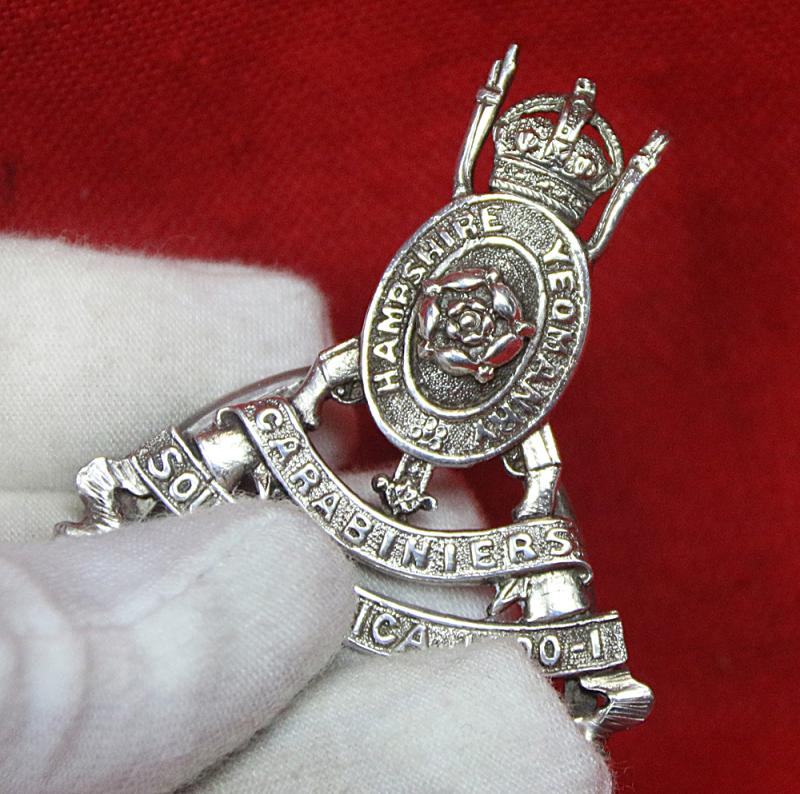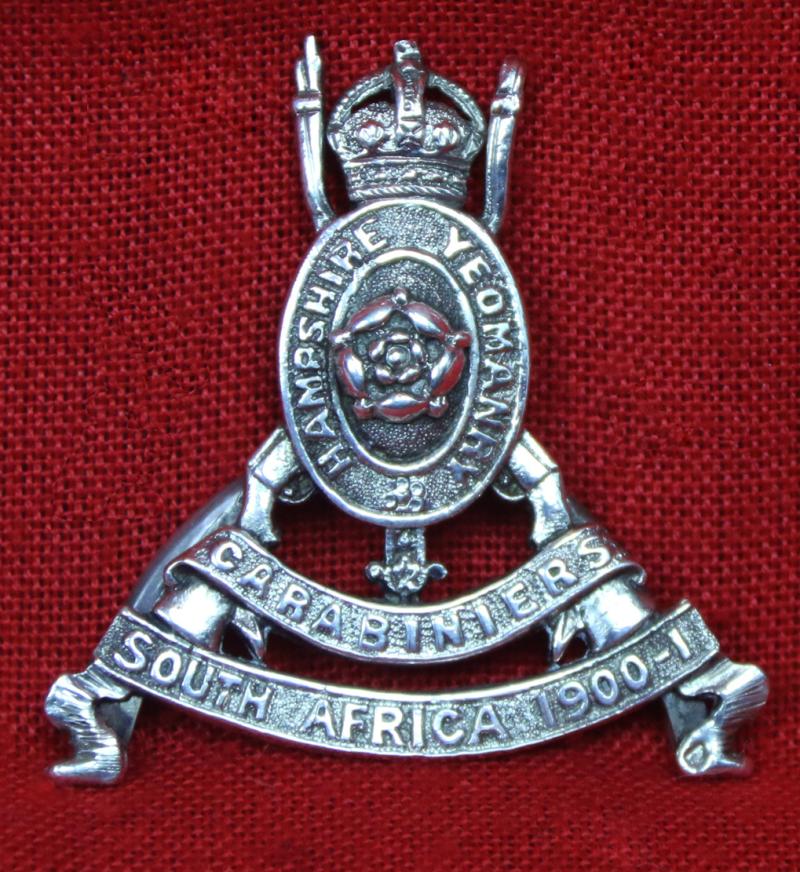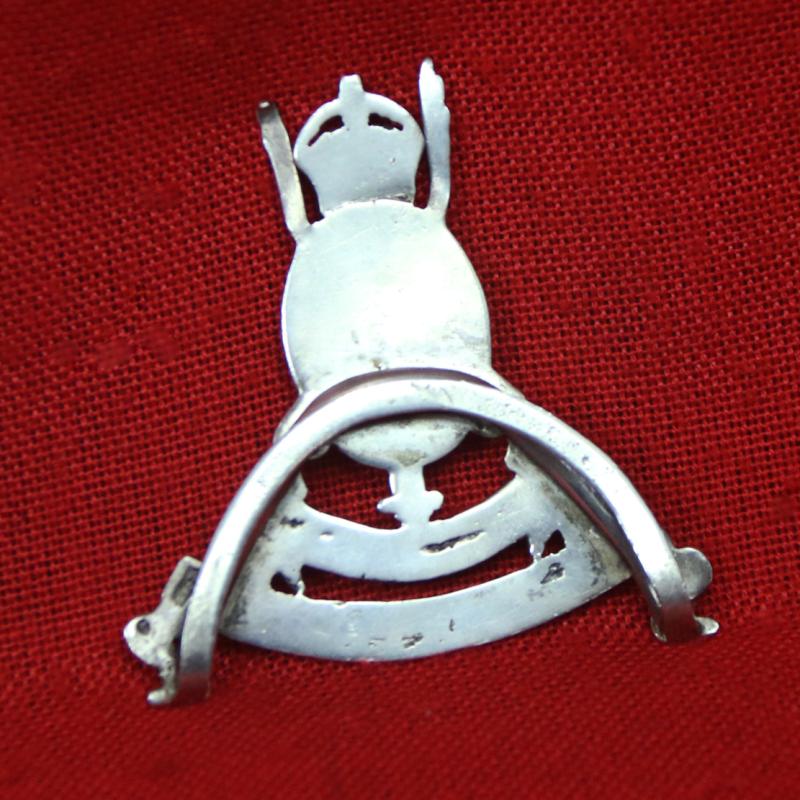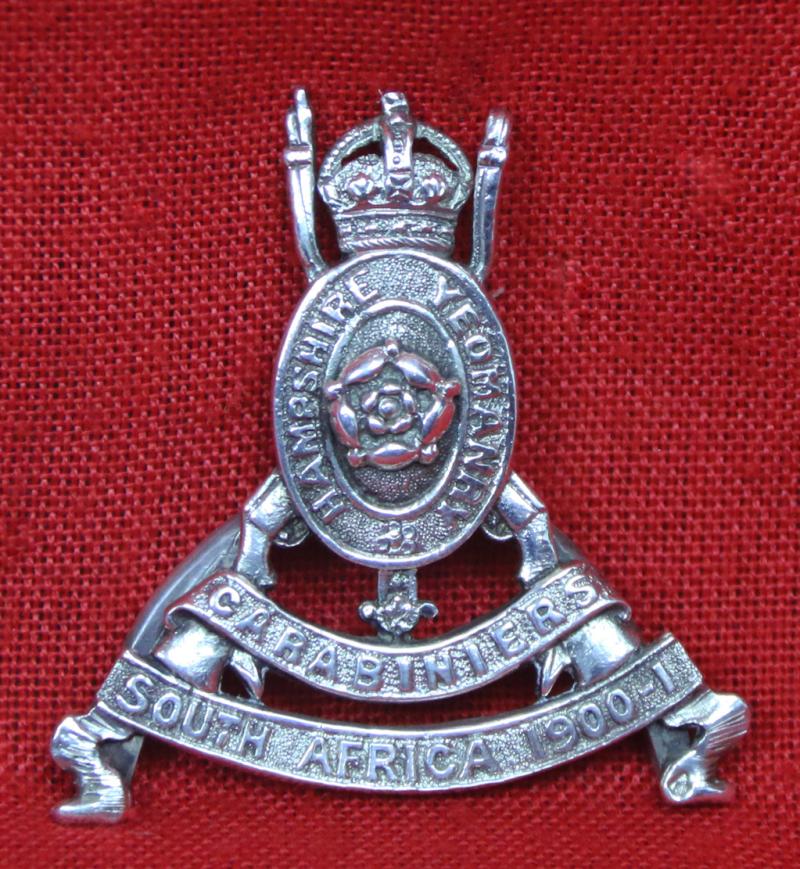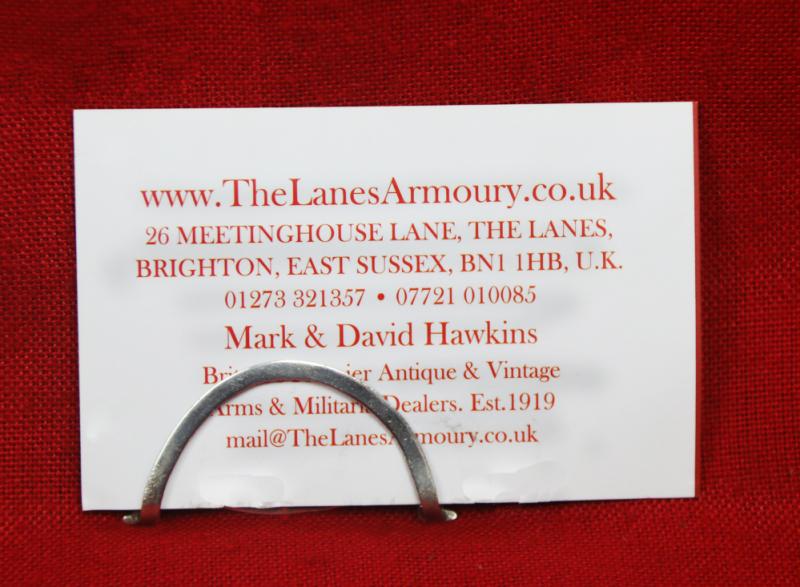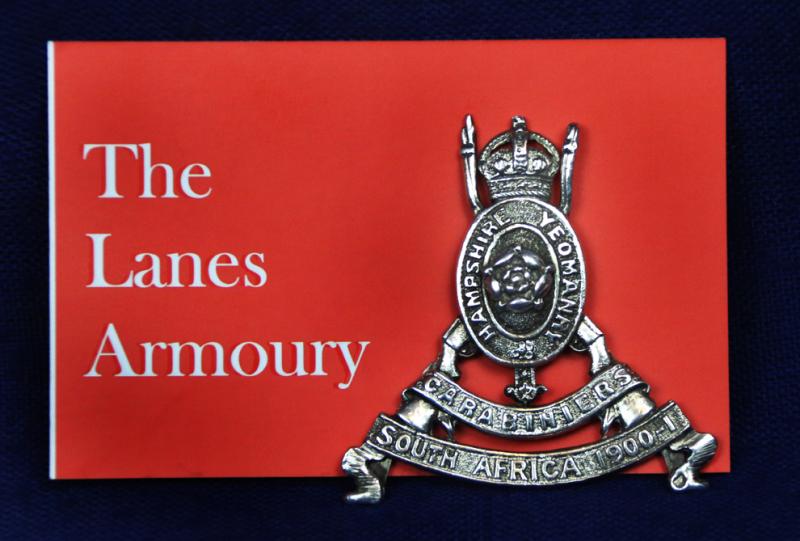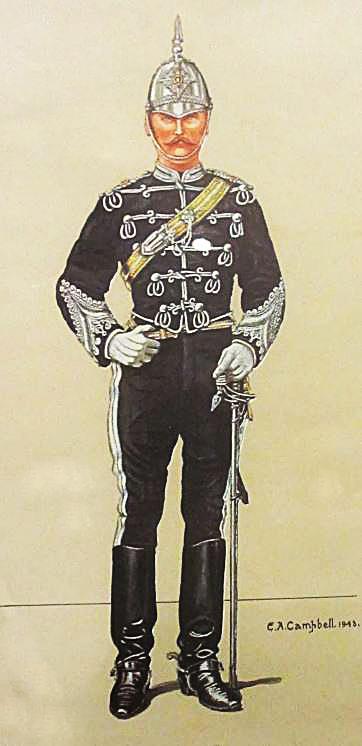A Most Scarce Edwardian Hampshire Yeomanry Carabiniers Regimental Silver Place Badge With 'Battle Honour' Scroll, South Africa 1900-1901
The Hampshire rose to the centre of a crowned oval bearing the title, Hampshire Yeomanry, backed by a pair of crossed rifles, with the 'Carabiniers' scroll across the rifle butts and surmounted by Edward VIIth's King's crown, with the regimental 'Battle Honour' scroll of South Africa 1900-1. Tension sprung silver half hoop at the rear to insert a card, menu or regimental seating place name. In very good condition for age.
Between 1794 and 1803, a large number of cavalry units such as the North Hampshire Yeomanry Cavalry, the New Forest Volunteer Cavalry, the Fawley Light Dragoons and the Southampton Cavalry were raised in southern England as independent groups of Yeomanry. The Prime Minister, William Pitt the Younger, proposed that the English Counties form a force of Volunteer Yeoman Cavalry that could be called on by the King to defend the country against invasion or by the Lord Lieutenant to subdue any civil disorder within the country. These units were brought together under the collective title of North Hampshire Regiment of Yeomanry Cavalry in 1834, renamed Hampshire Regiment of Yeomanry Cavalry by 1848. The Regiment adopted the title 'Carabiniers' in 1887.
On 13 December 1899, the decision to allow volunteer forces serve in the Second Boer War was made. Due to the string of defeats during Black Week in December, 1899, the British government realized they were going to need more troops than just the regular army, thus issuing a Royal Warrant on 24 December 1899. This warrant officially created the Imperial Yeomanry. The Royal Warrant asked standing Yeomanry regiments to provide service companies of approximately 115 men each. In addition to this, many British citizens (usually mid-upper class) volunteered to join the new regiment.
The first contingent of recruits contained 550 officers, 10,371 men with 20 battalions and 4 companies, which arrived in South Africa between February and April, 1900. Upon arrival, the regiment was sent throughout the zone of operations. The Hampshire Yeomanry raised the 41st Company, 12th Battalion, and the first company left Southampton on 31 January 1900, bound for Cape Town
Code: 25190
275.00 GBP

